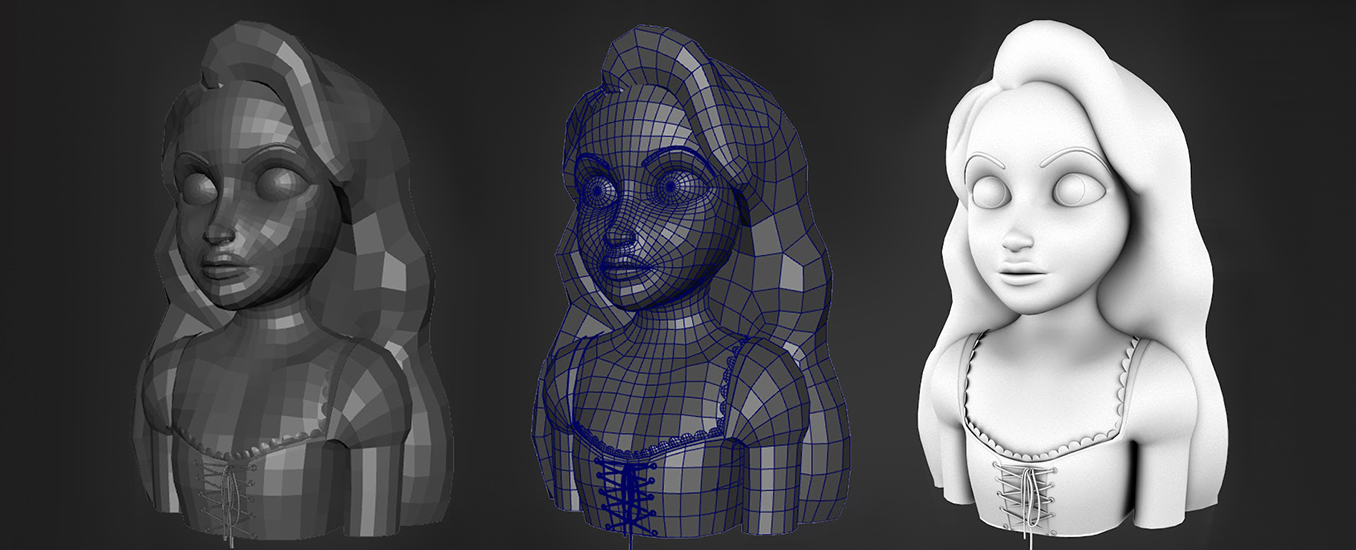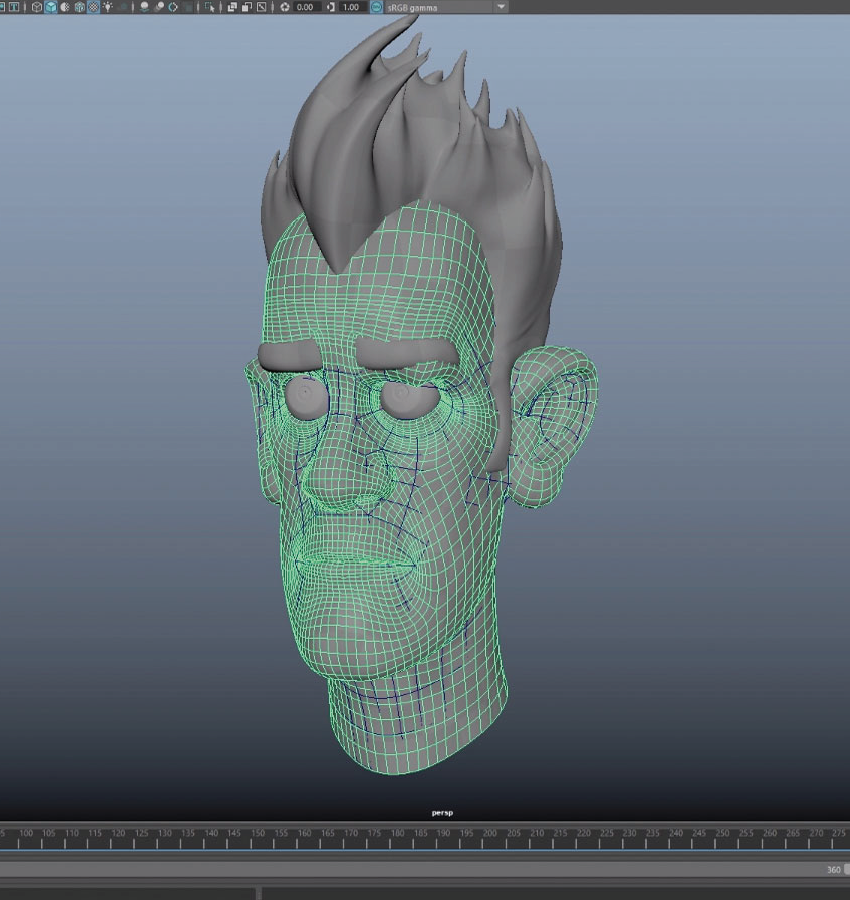
Role of 3D and CGI in Product Prototyping and Future Retail in the Metaverse (Web 3.0)
About 3D & CGI in Product Prototyping
A “prototype” refers to any pre-production model, mock-up, concept design or concept art that is created to assess a product idea. Product designers use three main types of prototypes-
(i) Engineering prototypes to test how well a product will work;
(ii) Ergonomics prototypes to test the product’s look & feel; and
(iii) Marketing prototypes to create advertising collaterals, plan retail merchandising, and measure the product’s appeal to internal & external focus groups
Today every aspect of prototype creation depends on advanced design. In the engineering and visualization software packages like ArtiosCAD for engineering. Adobe Creative Suite and ZBrush for visual design, and MockShop for visual merchandising. These are just a few examples in an increasingly crowded space of powerful software packages, further more some industry or niche-specific, some generic.
Virtual product prototyping offers a lot of advantages. 3D modelling greatly reduces turn around time (TAT) in iterative design, allowing the designer to make small changes based on various inputs. Likewise, visual design can be finetuned or multiple designs can be developed simultaneously to reduce the marketing cycle. The speed improvement, negligible iteration cost and multiple parallel designs all mean lower costs and improved competitiveness.
Virtual prototyping also unlocks the power of the internet so teams in diverse locations can collaborate in real-time to design complex products. Separate teams can simultaneously co-develop and test the product to make the development process agile. Furthermore, millions of designs, representing the combined knowledge and creativity of a company can be archived and catalogued for ease of access for future reference. This makes prototyping a process, rather than person-dependent activity and safeguards a company’s long-term interests.
One final aspect of CGI-based product prototyping is its role in creating physical prototypes. At some point in every physical product’s development journey, a real physical prototype has to be built. In modern industry this is rarely done by hand or even by older CNC (Computer numerical coding) techniques. Instead modern computer-aided manufacturing techniques like 3D Printing and Rapid Prototyping use detailed 3D modelling files as inputs to build a physical prototype, or even a production version of short-run products like some jewellery designs.
Role of 3D technologies in modern prototyping and manufacturing.
The designer creates and tests the product virtually, connects remotely to a 3D printer, and interfaces via the 3D model to build a physical prototype/model.
Use of 3D Modeling and 3D printing in jewellery production. This ring is modeled and rendered realistically with 3D modeling and rendering software. The manufacturer of the ring uses the same 3D modeling files used for the imagery as input files to manufacture the jewellery using 3D printing.
The Future of Product Prototyping and Retail in the age of Web 3.0
The rise of digital product prototyping is tied to two tech trends- faster. The more powerful software running on evermore powerful computers, and constantly improving bandwidth and always-on connectivity via a ubiquitous internet. These two technologies enabled new business models like SaaS, allowing manufacturers to replace one-time software sales with large capex with more affordable monthly subscriptions, transforming how many people could afford and access powerful software tools, in turn increasing the overall momentum of virtual prototyping.
In the future this positive trend will continue to increase in sophistication. The two biggest influencing technological advancements in this space in the near future are likely to be Photorealism, Mixed Reality, and Blockchain.
1. Photorealism
Photorealism refers to creating complex. The life-like models with extraordinary detail, real-life material properties, and reflecting environmental effects like light, wind, and gravity accurately. This is extraordinarily difficult to do. This requiring extremely powerful computers. Even then only pre-rendered images are possible. Consequently video-game graphics, especially for online games can never be as rich as the pre-rendered graphics of an action movie. Similarly eCommerce, retail, auto, medicine, communication, and several other fields remain hampered because photorealistic modelling and transmission isn’t currently possible.
This is about to change with widespread 5G network in the next couple of years, combined with ground-breaking real-time rendering engines from leading rendering developers like Unreal, as well as significant research in this field by global companies like Nvidia, Chaos, Kujiale, etc. This will rapidly unlock new applications in architecture, Tele-health, and remote purchase of high end consumer goods, something that consumers still hesitate to do, unsure how close the expensive item will be in reality compared to its digital counterpart.
2. Extended Reality
Here we include all “rendered” reality technologies, including VR, Augmented Reality, and Mixed Reality, where users can enter the virtual world at different levels of immersion. With respect to applications in design, prototyping, and retail, Extended Reality technologies will enable faster, better designs with real-time feedback, and more satisfied customers with fewer returns while reducing physical warehouses and showrooms. The same goes for professional retail merchandisers, who spend hours and days optimizing shelving, displays and floor space in supermarkets. As technology helps overcome visualization barriers, merchandisers can work more efficiently. Its spending more time thinking creatively and less time struggling with software tools. As the technology becomes even more intuitive, creative yet technically-challenged people will be able to participate in the creative process.
3. Blockchain
Blockchain is expected to be one of the building blocks of Web 3.0. The internet of the future that will be the underlying technology for virtual mega-worlds like Metaverse. While Web 3.0 is still taking shape. It will doubtless be decentralized with inherent cryptocurrency-exchange capability. Thus enabling NFTs to be transacted seamlessly. For prototype specialists and retailers, this represents an opportunity of a lifetime. As photo-realistic models used for marketing further more it can now be sold for real money in the virtual world. Demand and marketplaces for 3D models will skyrocket as users seek beautifully rendered clothing, accessories, housing, cars and even unique avatars with legal, embedded right of ownership.
Conclusion
Retail and prototyping will continue to evolve at an accelerated pace for the foreseeable future as new technologies including AI, Haptics, Smart Materials etc. Moreover it become steadily more intwined in new product development. The effort will continue to be to both understand and influence consumers while achieving improved stickiness and life-long loyalty. Hope you have understood the Role of CGI & 3D industry impact on future product prototyping and Future of retail on Metaverse (Internet 3.0)



